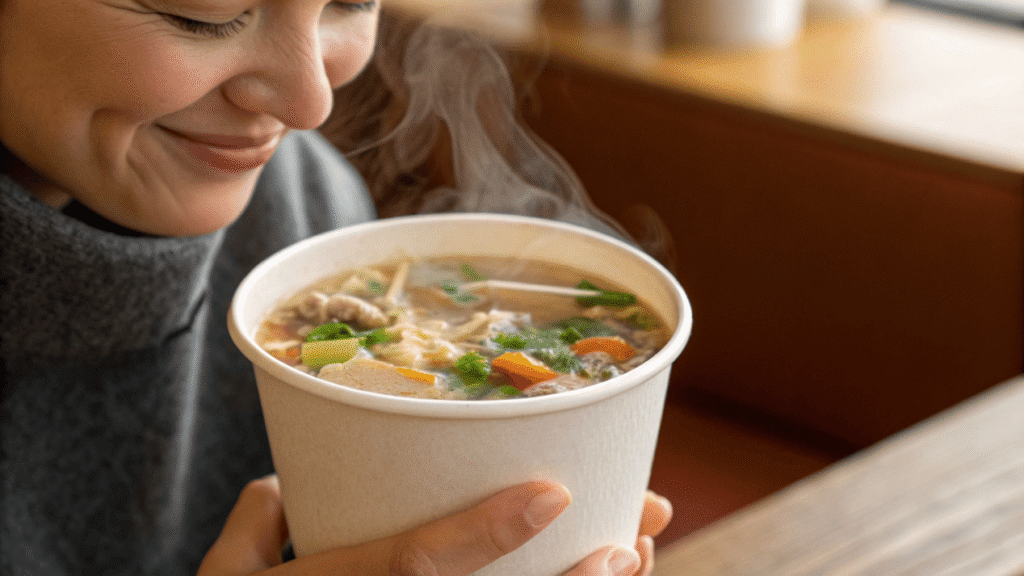Serving hot soup in a flimsy bowl causes leaks and customer complaints. This hurts your brand's reputation and can even lead to dangerous spills.
Prioritize material safety with certified PFAS-free bagasse or BPA-free PP. Then, ensure it has high heat resistance for boiling liquids. Finally, choose a sturdy, leak-proof design that fits your budget.
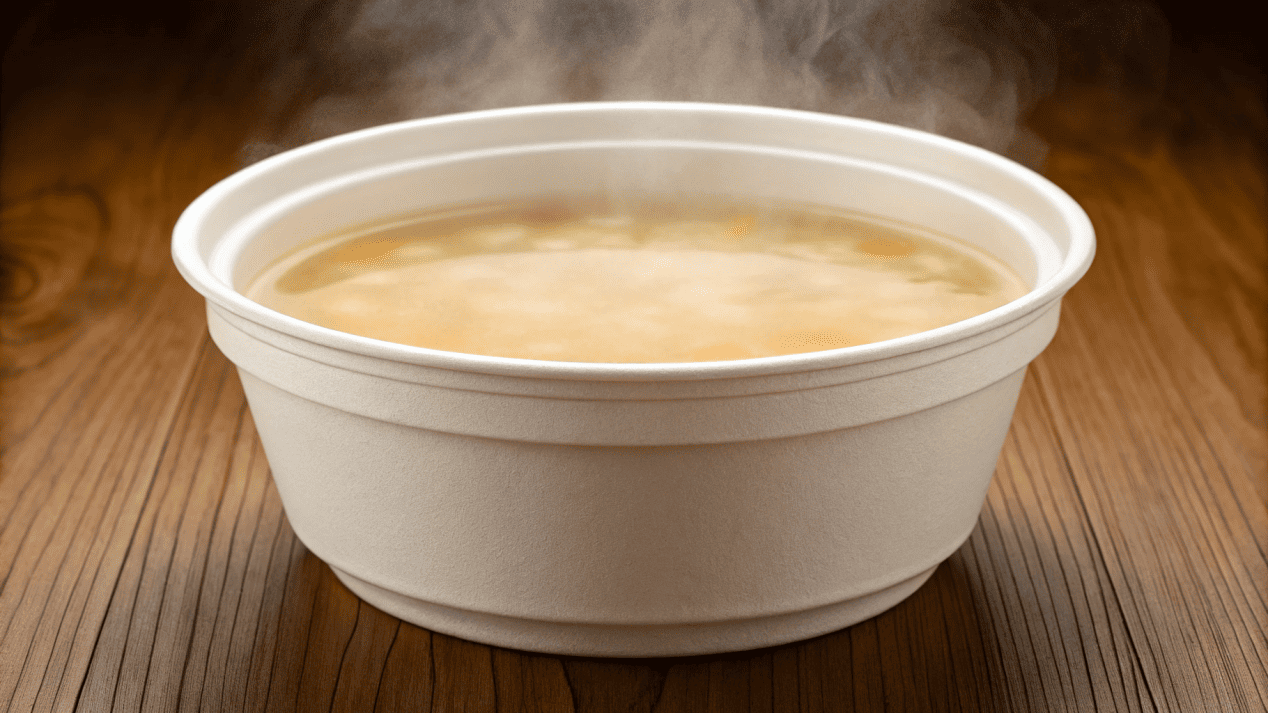
I once saw a customer at a cafe try to carry a bowl of hot tomato soup, but the bottom of the cheap paper bowl became so soft it almost collapsed in his hands. The cafe saved a few cents on that bowl but risked losing a customer for life. This is a mistake I help my clients avoid every day. Choosing the right bowl isn't just about cost; it's about the entire customer experience and their safety. Let’s break down what you really need to look for.
Which materials are the safest for hot soup?
You worry that hot soup could cause chemicals to leach from the bowl into the food. This is a serious health concern for your customers and your business.
The safest materials are certified PFAS-free sugarcane bagasse and BPA-free Polypropylene (PP). Paper bowls with a compostable PLA lining are also a great choice. Always look for FDA or EU food contact certification.
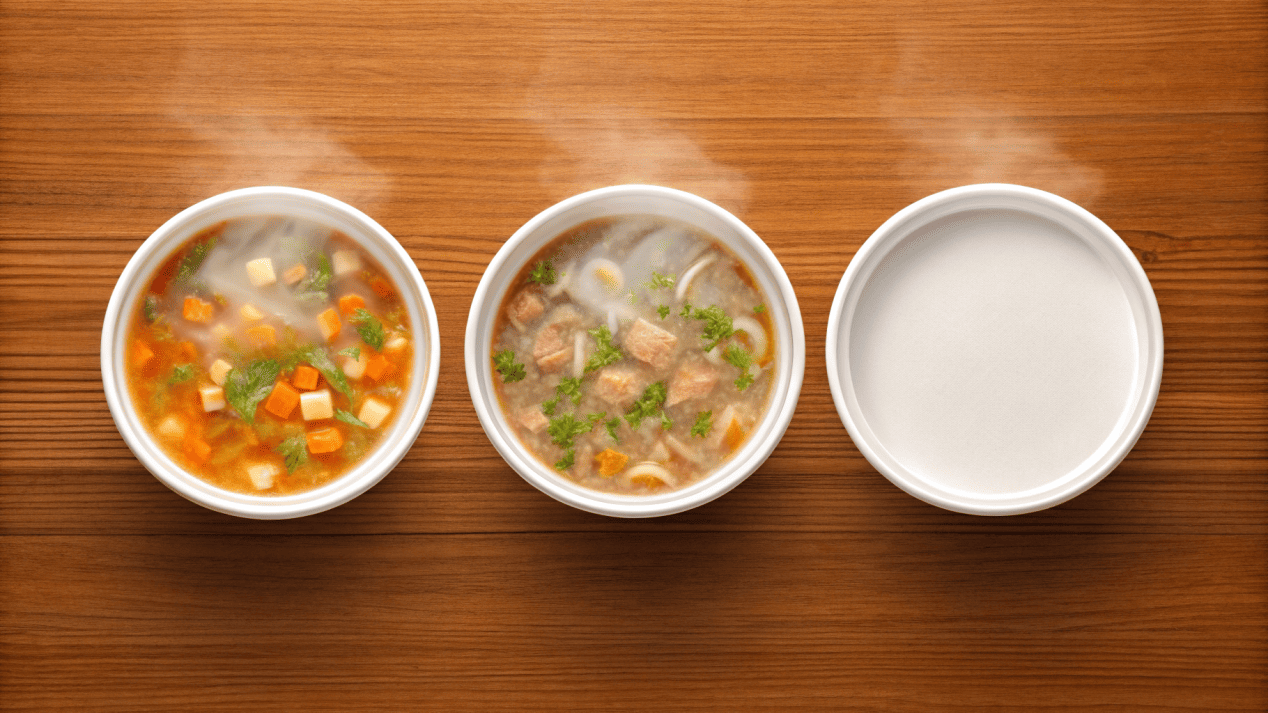
As a manufacturer, safety is the first thing we talk about. It is non-negotiable. When hot liquid touches a surface, the risk of chemicals transferring into the food increases. That's why third-party certification is so important—it's proof that a product is safe. For my clients, I always recommend one of these proven materials.
| Material | Key Safety Feature | What to Verify |
|---|---|---|
| Sugarcane Bagasse | Natural, renewable, chemical-free. | Must be certified PFAS-free. PFAS are "forever chemicals" that some manufacturers use for water resistance, but they are a health risk. |
| Polypropylene (PP) | Very stable at high temperatures. | Must be certified BPA-free. BPA is another chemical that has been linked to health issues. |
| Paperboard | Made from wood pulp, needs a lining. | The lining is key. A PLA lining is a plant-based, compostable, and safe option. |
Never take a supplier's word for it. Always ask to see their FDA (for the US market) or EU 10/2011 (for the European market) compliance documents. This paperwork is your guarantee that the bowl your customer is eating from is completely safe.
Will your bowl hold up to boiling hot soup?
You serve piping hot soup, but your current bowls get too hot to hold. Customers are forced to juggle the bowl, risking spills and burns.
Yes, if you choose the right material. Sugarcane bagasse and PP plastic offer excellent heat resistance, staying sturdy with boiling liquids. Double-wall paper bowls provide the best insulation to keep the outside cool.
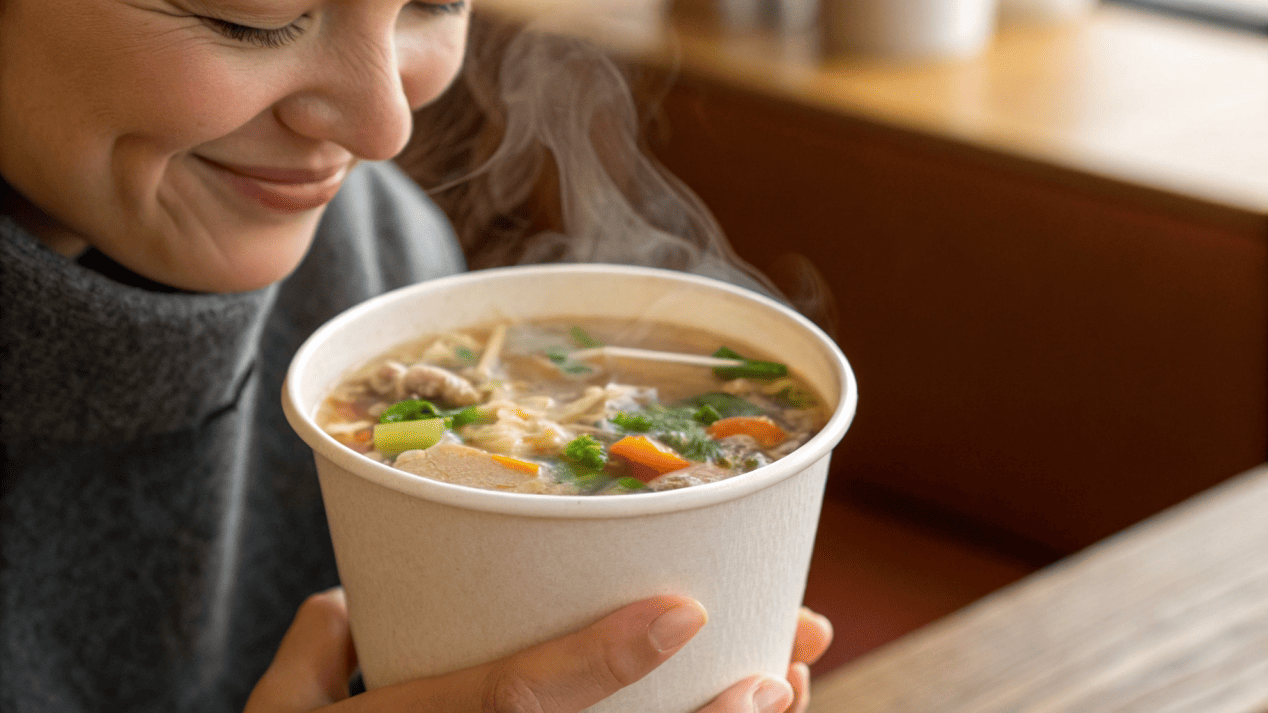
A bowl's performance with heat is about two things: staying strong and being comfortable to hold. A bowl failing at either of these can ruin a customer's meal. Materials perform very differently under heat. Bagasse, for example, is fantastic and can handle temperatures up to 120°C (250°F) without getting soft. PP plastic is even more heat resistant. Standard PLA-lined paper bowls are good for hot soup but have a slightly lower tolerance, around 90°C (195°F).
Microwave Safety is a Must
Many customers want to reheat their leftovers. A bowl that is microwave-safe is a huge convenience. Bagasse and PP bowls are almost always microwave-safe, but you should always check for the label. Never microwave a bowl that isn't clearly marked as safe, as it can warp or release chemicals. This simple feature adds a lot of value for your customer.
Insulation is Key
How the bowl feels in the hand is just as important as its durability. No one wants to burn their fingers. Bagasse has good natural insulation. But for the best performance, a double-wall Kraft paper bowl is the winner. It has an air pocket between two layers of paper, which keeps the soup hot while the outside of the bowl stays comfortably cool to the touch.
How much should you spend on a good soup bowl?
You need to manage your costs, but you know the cheapest option is not always the best. How do you find a quality soup bowl that fits your budget?
Expect to pay more for premium, eco-friendly options like sugarcane bagasse. Mid-range choices include lined paper-bowls, while plastic bowls are the most budget-friendly. But a cheap bowl can cost you more in the long run.
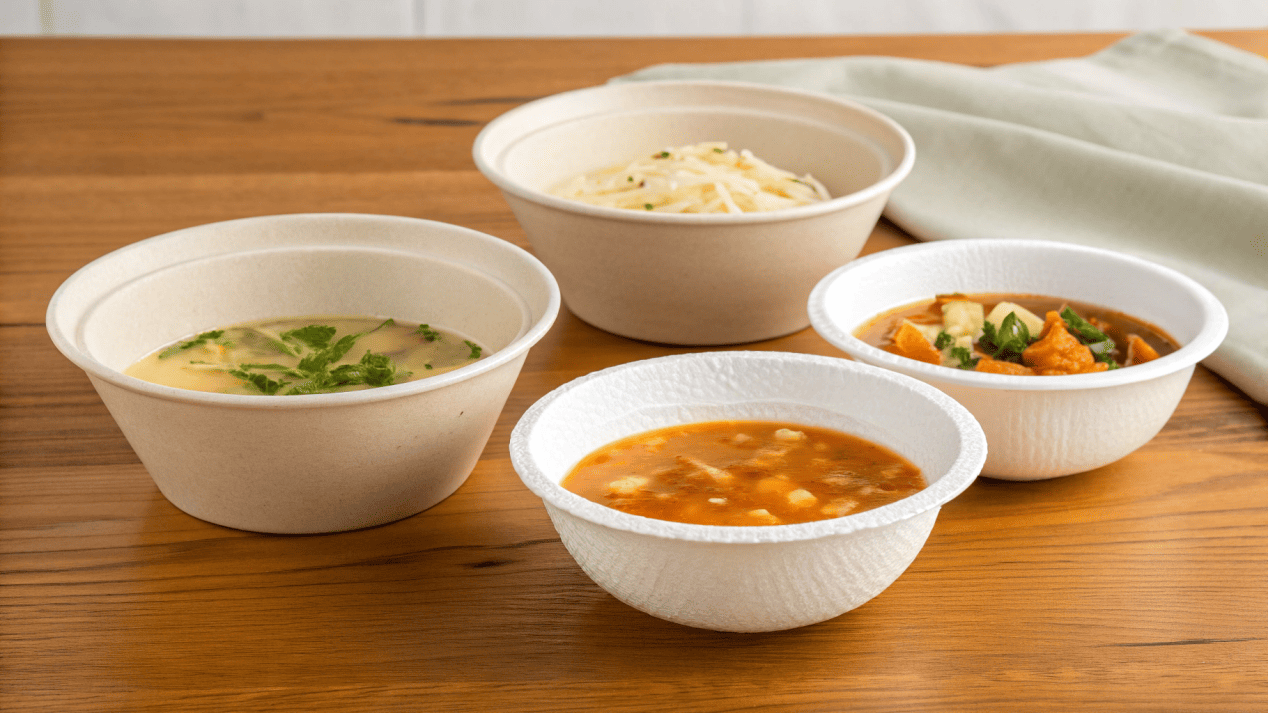
Price is always a factor, but I encourage my clients to think about "value" instead of just "cost." The few cents you save on a cheap bowl can easily be lost if a customer has a bad experience and never returns. Your packaging is part of your product and your brand's reputation. Investing a little more in a quality bowl is an investment in customer loyalty.
Here is a general idea of how the costs break down:
| Material | Cost Tier | Why It Costs This Much |
|---|---|---|
| PP Plastic | $ (Most Affordable) | Plastic is cheap to produce in massive volumes. The raw material costs are low. |
| PE-Lined Paper | $$ (Mid-Range) | A traditional and common option. The cost is balanced between paper and a simple lining. |
| PLA-Lined Paper | $$$ (Mid-Premium) | The plant-based PLA lining is more expensive to produce than standard PE plastic lining. |
| Sugarcane Bagasse | $$$$ (Premium) | Processing the natural fibers and the eco-friendly positioning command a higher price. |
For example, a pack of 50 basic plastic bowls might cost $5, while the same number of premium sugarcane bagasse bowls could be $15 or more. My advice is to find the best bowl you can afford. Don't let a few cents decide the quality of your customer's experience.
What do your customers really think about your soup bowls?
You think your bowls are fine, but you rarely hear what customers actually say. Negative feedback often goes unsaid; customers simply don't come back, hurting your business silently.
Customers value sturdy, leak-proof bowls that don't get soggy. The most common complaints are flimsy construction, poor lid fit for takeout, and bowls that get too hot to handle. The bowl is part of their meal.
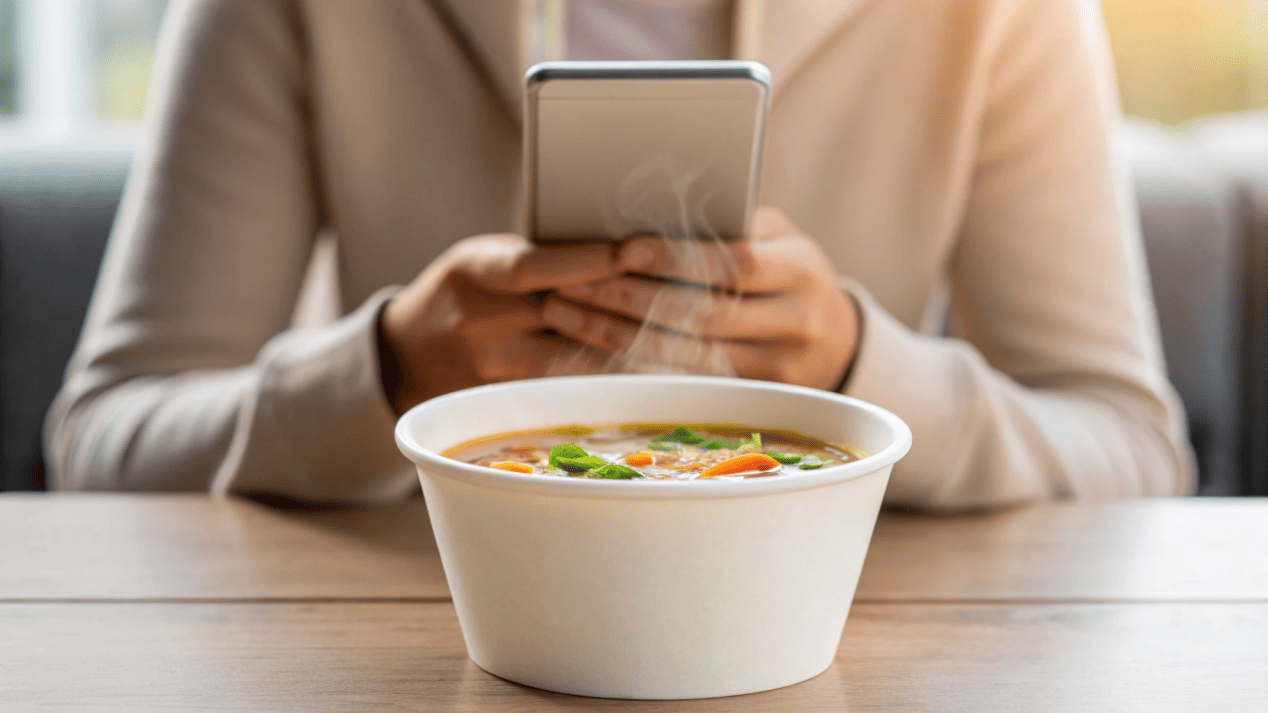
I always read the online reviews for my clients' competitors. It is amazing how often the packaging is mentioned. The soup can be delicious, but if the bowl leaks in a customer's car on the way home, that is all they will remember. You must think about the bowl from your customer's perspective.
What Customers Love
Customers appreciate the details. They leave positive feedback for bowls that are strong and feel substantial in their hands. They love a bowl that they can hold comfortably without it being too hot. For takeout orders, a lid that snaps on securely and doesn't leak is the number one sign of quality. If the bowl is also compostable, environmentally aware customers see that as a huge plus.
What Customers Hate
The complaints are almost always the same. Flimsy bowls that feel like they will collapse are a major concern. Any sign of sogginess or a leaking seam leads to negative reviews. For takeout, a lid that pops off or doesn't fit right is a cause for major frustration. A bowl that is too hot to hold is also a common complaint. The disposable bowl is the last thing your customer interacts with. It's their final impression of your brand’s quality. Make it a good one.
Conclusion
A good soup bowl is safe, heat-resistant, and sturdy. Choosing the right one protects your brand, satisfies your customers, and is a smart investment in your business.
